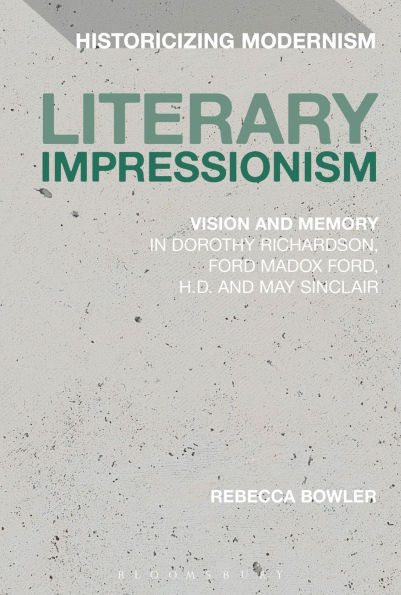With its new innovations in the visual arts, cinema and photography as well as the sciences of memory and perception, the early twentieth century saw a crisis in the relationship between what was seen and what was known. Literary Impressionism charts that modernist crisis of vision and the way that literary impressionists such as Dorothy Richardson, Ford Madox Ford, H.D., and May Sinclair used new concepts of memory in order to bridge the gap between perception and representation.
Exploring the fiction of these four major writers as well as their journalism, manifesto writings, letters and diaries from the archives, Rebecca Bowler charts the progression of modernism's literary aesthetics and the changing role of memory within it.
1123243200
Exploring the fiction of these four major writers as well as their journalism, manifesto writings, letters and diaries from the archives, Rebecca Bowler charts the progression of modernism's literary aesthetics and the changing role of memory within it.
Literary Impressionism: Vision and Memory in Dorothy Richardson, Ford Madox Ford, H.D. and May Sinclair
With its new innovations in the visual arts, cinema and photography as well as the sciences of memory and perception, the early twentieth century saw a crisis in the relationship between what was seen and what was known. Literary Impressionism charts that modernist crisis of vision and the way that literary impressionists such as Dorothy Richardson, Ford Madox Ford, H.D., and May Sinclair used new concepts of memory in order to bridge the gap between perception and representation.
Exploring the fiction of these four major writers as well as their journalism, manifesto writings, letters and diaries from the archives, Rebecca Bowler charts the progression of modernism's literary aesthetics and the changing role of memory within it.
Exploring the fiction of these four major writers as well as their journalism, manifesto writings, letters and diaries from the archives, Rebecca Bowler charts the progression of modernism's literary aesthetics and the changing role of memory within it.
47.95
Out Of Stock
5
1

Literary Impressionism: Vision and Memory in Dorothy Richardson, Ford Madox Ford, H.D. and May Sinclair
256
Literary Impressionism: Vision and Memory in Dorothy Richardson, Ford Madox Ford, H.D. and May Sinclair
256Paperback(Reprint)
$47.95
Related collections and offers
47.95
Out Of Stock

Product Details
| ISBN-13: | 9781350063914 |
|---|---|
| Publisher: | Bloomsbury Academic |
| Publication date: | 03/22/2018 |
| Series: | Historicizing Modernism |
| Edition description: | Reprint |
| Pages: | 256 |
| Product dimensions: | 6.14(w) x 9.21(h) x 0.54(d) |
About the Author
From the B&N Reads Blog
